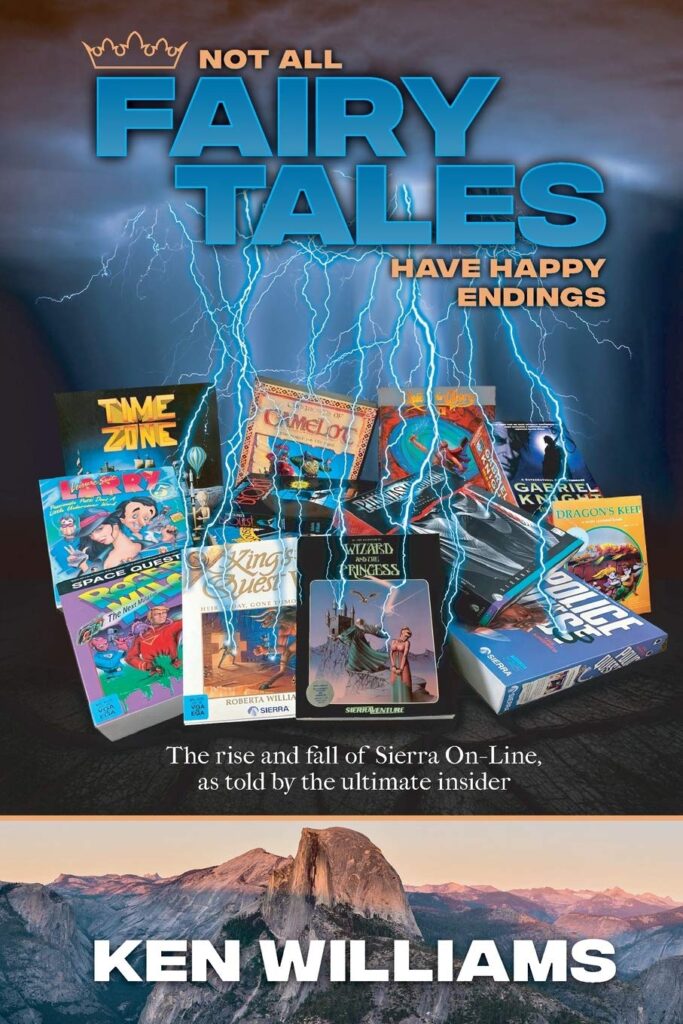(Blogtober Day 12)
One of my favorite books that delves into the history of game development is Ken William’s “Not All Fairy Tales Have Happy Endings: The Rise And Fall Of Sierra On-Line.”

Despite the rather long name and somewhat busy cover, this book was a pretty fun and interesting read. Ken Williams and his wife Roberta Williams are some of the legends in game development having started the company and designing the games that would go on to inspire a generation of players and future game developers. Developing games like Kings Quest, Phantasmagoria, Leisure Suit Larry, and also publishing a list of renowned titles like Half-Life, Sierra was at the top of the industry at one point.
This book penned by Ken Williams himself dives deep into the entire saga of Sierra Online. From his time as a computer science student all the way to selling the company and ultimately Sierra’s untimely demise at the hand of a financial scheme. I highly recommend it if you even have a fleeting interest in Sierra games or game industry history.
One of the many stories told in this book that I enjoyed was actually something that had less to do with a specific title, but rather Ken William’s approach to solving a problem. He always recognized that a daunting amount of work, or often in his case in the early days of Sierra a daunting amount of code can be broken down into smaller and smaller tasks. He mentions that if there was ever some programming that would take more than 10-20 lines of code then he would again try to break it down even more until what was left was a bunch of small very manageable tasks to complete. I’m sure this seems somewhat obvious to people sometimes, and I’m also sure that programming may take a bit more than a bunch of 10 line blocks of code, but it’s something I’ve taken with me and that anecdote only really scratches the surface of what the book had to offer.